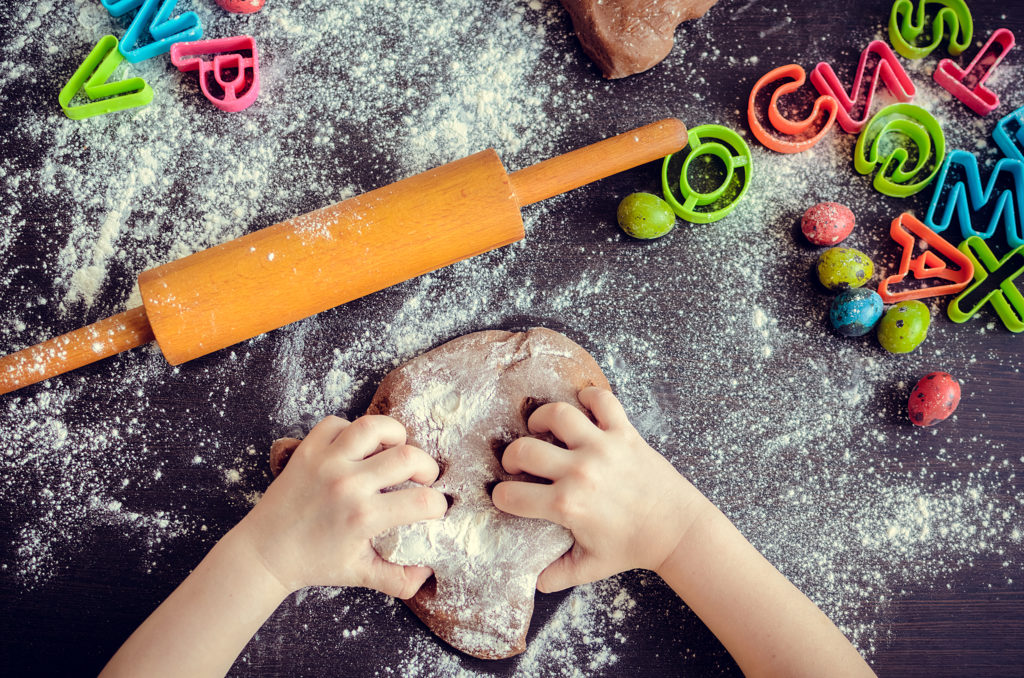Persian Children’s Games
Soccer (Football): The number one game played by all ages and both genders in Iran is soccer. Children love this contact sport, but men usually play professionally only. In this game, there are two sides of a field and two teams. One team must try and get the ball into the other teams goal without using their hands, only feet. The trick is getting it past the other team and the other team’s goalie.
In the wealthier families, horseback riding, recreational games, theatrical games, and sports games are commonly sought out and has been this way for a while now. Like the rest of the world, with the development of new technology so often and electronics, the way children engage in outside activity is becoming very different from before.
Common Persian Cuisine
There are three main dishes that Persians will more than likely include in a meal. These dishes are; rice, grilled meat, and Persian stew or better known as chelow, kabobs, and khoresh.
The kabobs are different types of meat with onions, fruits, nuts, and other grains as well. The rice can be the typical saffron or it can be “jeweled” which means it is extremely colorful and resembles rubies and diamonds.
Persian stew is made with many meats such as poultry, fish, or other red meats. In the stew is vegetables, fruits, grains, and nuts as well. It is slow simmered for ten or more hours, and can also be served vegetarian style. The vegetarian kholesh is served with spinach, peas, zucchini, celery and lentils.
3 Simple Persian Recipes
Tabouli
Ingredients: 10 to 12 romaine lettuce leaves, cleaned and well chilled, Lemon slices (for garnish), 6 tomatoes cut into small pieces, ½ cup good olive oil, ½ teaspoon black pepper, ½ teaspoon salt, 1 teaspoon allspice, ½ cup lemon juice, ½ cup chopped fresh mint, 1 cup chopped scallions, 2 cups chopped parsley, 1 cup fine bulgur, carefully washed
Directions: -Soak bulgur in cold water for 3 hours.
– Drain; mix with remaining ingredients
-Garnish with lemon slices and serve with lettuce leaves, which can be used
astabouli scoops
Arabic Yogurt Soup
Ingredients: ¼ cup chopped fresh parsley, ¼ cup chopped fresh mint, Dash of pepper, ½ teaspoon salt, 2/3 cup yogurt, 1 slice lemon, 1/3 cup raw rice, 4 cups beef broth, 1 tablespoon butter, 1 onion, sliced
Directions: -Cook the onion and butter in a covered casserole for 4 minutes. Add 1 cup beef broth, the rice, and the lemon slice.
-Cook, covered, in the microwave oven, stirring occasionally, until the rice is tender (12 to 15 minutes).
-Add the remaining broth and heat to a simmer. Stir a little of the hot soup into the yogurt.
-Then stir the yogurt into the soup and mix until it is creamy. Season.
-Ladle into soup bowls and sprinkle with the chopped mint and parsley.
Baked Walnut Omelette
Ingredients: 6 eggs, Butter, Seasoning, 1 tablespoon currants, 4 oz chopped walnuts, 2 oz white crumbs, Large handful of chopped chives
Directions: – Beat the eggs and mix with the other ingredients, except the butter.
-Butter a round dish and let it heat in the oven for a moment.
-Pour in the egg mixture and cook in a moderate oven (400°F) until set.
3 Simple Persian Desserts
Kateh Rice Cake
Ingredients: 2 cups basmati rice, 3½ cups water, 2 teaspoons salt, ¼ cup ghee
Directions: – Pick over the rice, wash it very well, and drain. Place it in a 10-inch frying pan and add the water and salt.
– Bring to the boil over medium heat, stirring occasionally. Cover, reduce heat a little, and cook for 15 minutes until all the water is absorbed.
-Add the ghee and stir with a wooden spoon. Even out the top of rice, pressing lightly
– Cover the pan and return it to medium-low heat for 30 minutes. Move the pan over the burner from time to time so that bottom of the rice becomes evenly browned.
-Remove from the heat and place the bottom of the pan in cold water for 10 seconds. Dry the bottom of the pan off with a towel.
– Run a spatula around the sides to loosen the rice, and then place a plate on top of the pan. Holding the plate and pan firmly, turn them upside down so that rice cake comes out cleanly.
-Serve this cut in wedges with kebabs or stews. This is often served cold in summer.
Praline Cream
Ingredients: 2 oz blanched almonds browned in the oven, 2 oz caster sugar, ¼ pound unsalted butter, 3 eggs (separated), 3 oz caster sugar, ¼ pint double cream, Savoy biscuits
Directions: – Make the praline by melting the sugar in a thick pan and when it is brown, stirring in the almonds.
-Pour the mixture on to a slab and when cold and hard, break it up and pound it finely.
– Beat the butter until it is really light and creamy, which may take up to half an hour.
– Beat the egg yolks together and beat into the butter.
-Add the sugar and the praline mixture, beating continuously, and finally fold in the stiffly whipped egg whites and the whipped cream.
– Line a mould with Savoy biscuits and pour in the cream
-Leave in a cold place until set and turn out to serve.
Persian Melon Salad
Ingredients: 1 honeydew melon, fruit removed with a melon baller, 1 cantaloupe, fruit removed with a melon baller, 1/4 watermelon, fruit removed with a melon baller, 1 bunch grapes, 1 pineapple – peeled, cored, and cut into chunks, 2 tablespoons pickled ginger, 1 cup fresh orange juice, 1/4 cup fresh lime juice, 1 tablespoon white sugar, 1/4 cup chopped fresh mint, 1 pint fresh strawberries, 4 sprigs fresh mint for garnish
Directions: -Combine the honeydew, cantaloupe, watermelon, grapes, pineapple, pickled ginger, orange juice, lime juice, sugar, and chopped mint in a large bowl; stir to mix evenly. Cover the bowl with plastic wrap and refrigerate at least 1 hour.
-Gently fold the strawberries into the fruit mixture. Garnish with the mint sprigs to serve.
Iranian Children’s Day
On October 7th of every year, cartoons of children’s rights are shown, cartoon characters entertain, festivals, events, and much more are held in Iran in recognition of Children’s Day; a day to celebrate health, and the well-being of all children. Murals are painted, arts and crafts create meaning for the children on a second birthday; the children are shown appreciation on this day.
Fun Facts
– The former name of Iran was Persia, which was in use till 1935.
– Persians have a different language and identity from the rest of the Middle East.
– Iran is one of the world’s oldest continuous major civilizations, with historical and urban settlements dating back to 4000 BC.
– Iran has crocodiles. It’s tigers were hunted to extinction 50 years ago. But still has the only Asiatic cheetah.
– Persian (Farsi) is still spoken in Tajikestan and Afghanistan. It was the official court language of India for 200 years.
– Surprisingly, Persia [Iran] built the earliest known windmills, which resembled large paddle wheels. Iran was pioneering wind energy long before any other nation realized the energy benefit of God’s natural energy powerhouse.
Persian Customs and Etiquette
- Iranians protest compliments and attempt to appear vulnerable in public.
- They will belittle their own accomplishments in an attempt to appear humble, although other Iranians understand that this is merely courtesy and do not take the words at face value.
- When they are in public, they must conform to accepted modes of behavior. It is only within their homes among their inner circle that they feel free to be themselves. Family members are always part of the inner circle.
- Iranians take their responsibilities to their family quite seriously.
- Introductions are generally restricted to members of the same sex since men and women socialize separately.
- The most common greeting is “salaam alaykum” or more simply “salaam” (peace).
Persia (Iran) Must See’s
Ali Qapu Palace: Five floors, 48 meters tall, this palace in Iran is a wonderful tourist attraction designation for all families. It is surrounded by a terrace and held up by wooden columns.
Kish Island Beach: White sand, colorful reefs, beautiful fish. This beach is the perfect getaway spot for all families when visiting Persia (Iran).
Persepolis: a historical site in Iran built under the ruling of Darius the Great in 518 B.C., “It was built on an immense half-artificial, half-natural terrace, where the king of kings created an impressive palace complex inspired by Mesopotamian models.” This area is a wonderful section to bring your children to learn history and have fun.
Festivals/Holidays
Nowruz: The traditional Iranian(Persian) new year holiday celebrated by Iranian, Turkic and many other peoples in West Asia, Central Asia, South Asia, Northwestern China, the Caucasus, the Crimea, and the Balkans. It lasts for 13 days and the last day is March 21st. During these two weeks, there are plenty of family activities and festivals. One of the important foods to cook at this time is baklava, which includes smoked fish, rice, herbs, parsley, coriander, chives, dill and fenugreek is served the day before Noruz. The last important meal is Resteh Polo, a dish with rice and noodles, is served on Nowruz which is said to symbolically help one succeed in life.
Sepandarmazgan: February 18th of every year, Iran (Persia) celebrates the Day of Love, Friendship and Earth. On this day, everyone eats sun raisins and sunflower seeds.
ChaharshanbehSoori (Persian Festival of Fire): Held on March 13th, a large parade is held on the last Tuesday of their calendar year, the celebration is held to celebrate the triumph of light over the dark. Fires are seen with people jumping over it, and many different foods are eaten. The females wear chadors so they cannot be recognized and everyone runs around and dances in the streets.
Sounds of Persia
Traditional Musical Instruments
- Daf: a Sufi instrument to be played in Khanghah-s for Zikr music, but has become a popular Persian instrument
- Dotar: comes from a family of long-necked lutes and can be found throughout Central Asia, the Middle East and as far as the North East of China in Xinjiang as well.
- Nay: a vertical reed flute with a long history in Persian classical music. The instrument has six finger holes in the front and one on the back of it.
Traditional Music
“The earliest examples of Persian Classical Music which are directly linked to the modern performance date from the times of Safavid dynasty (16/17th century), while its codification into modern form happened during Qajar reign (19th century). Until the 1900s, Persian Classical Music was almost exclusively within the purview of the royal courts and small, wealthy audiences,” (nationalgeographic.com).
Folk music has grown to be a Persian favorite, and traditional Persian music is growing in North America. Iranian pop music is also on the rise, extremely popular and takes on a world of its own.

Online Persian lessons for kids: dinolingo.com
